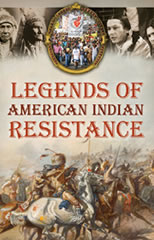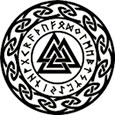
Author : Rielly Edward J.
Title : Legends of American Indian resistance
Year : 2011
Link download : Rielly_Edward_J_-_Legends_of_American_Indian_resistance.zip
Introduction. Long before Europeans arrived in North America, Indians from the Atlantic to the Pacific populated what would become the United States. They lived a life of relative freedom, able to maintain their traditional culture and practice their religious beliefs as their ancestors had done. This freedom, of course, was not absolute. American Indians’ movements were limited by the availability of food, water, and other necessities such as materials for constructing their homes. They also had generally defined areas for living and hunting, and if they crossed into other Indian people’s traditional areas, conflict was possible. Life was not easy, nor was it necessarily peaceful. Many Indian nations had traditional Indian enemies, and warfare was not uncommon. Nonetheless, within these limitations, each Indian nation enjoyed considerable freedom. No nation told another nation what to do, and even warfare seldom threatened a people’s very existence. From generation to generation, Indians lived according to their traditions and beliefs and were able to maintain a clear identity. Then came the Europeans. With their arrival in theNewWorld, life gradually— and in some cases suddenly—changed for the native peoples. A major cause of that change was the Europeans’ desire for land. Land for Europeans was something to own, whereas Indians, although exercising territorial rights to traditional homelands and hunting grounds, did not own the land. They certainly did not individually own portions of the land. In their view, the land was to be reverenced, and one would no more cut open the land as European farmers did than one would cut open one’s parent or grandparent. Likewise, no one would claim to own something that was viewed as essentially a spiritual entity. As Europeans and their Euro-American descendants steadily moved westward from the seventeenth century through the nineteenth century, they took the land that they wanted, often by national policy. When Indians were in the way, they did their best to remove the native peoples. That removal might be by killing the Indians or, later, forcing the survivors onto reservations. These reservations usually consisted of land that the Euro-Americans did not want, typically the poorest of land. If they later decided that they did want some or all of the land set aside for reservations, they simply forced the Indians to move again. Illness was an effective ally of the Euro-Americans during this process of removal, and diseases such as smallpox that migrated to America with the Europeans wreaked great destruction on Indians, who had been unable to establish any immunity to them. Euro-Americans, also by established policy, tried to remake the remaining Indians in their own image. They sought to change how Indians dressed, worked, worshipped, and were educated. As the United States grew and extended itself from Canada to Mexico, and from one ocean to the other, it attempted by national policy to effect, if not total annihilation, at least cultural genocide of the native peoples. Yet Indians throughout these centuries of the new nation’s expansion did not yield easily. Many Indian nations fought hard to maintain a way of life that to them was sacred, given to them by the Great Spirit. Leaders arose who used their intelligence, organizational skills, courage, and commitment to traditional values to resist Euro-American expansionism. If such efforts appear through a retrospective lens to have been doomed from the start, that simply makes the struggle even more heroic. Later, as the twentieth century passed its midpoint, new leaders arose who attempted resistance once again. These modern leaders set out to resurrect much of past tradition, to secure the rights of Indians as citizens of the United States as well as their basic right to be Indian, and to create cultural, spiritual, and economic opportunities to make a better life for themselves. That better life looked forward to the future while also turning back to their ancestors’ values. Something of the past, in fact, had survived, and the calling of the modern leaders was to build on that survival within the context of a very different world. Survival in earlier centuries—not mere physical survival of an individual person, but survival of a people—had required resistance. In the modern world, survival and resistance also went hand in hand. Events such as the takeover of Wounded Knee in 1973 have been about both resistance and survival, even more so than individual political issues or government policies. They have also been about freedom—the freedom to live one’s identity with pride and the opportunity to possess those qualities of life long granted to Euro- Americans: the right to life, liberty, and the pursuit of happiness. Legends of American Indian Resistance examines the lives of 12 such leaders, ranging from Metacom (more commonly known as Philip) in the seventeenth century to three twentieth-century figures: Dennis Banks, Russell Means, and Mary Brave Bird. Each chapter explores especially that individual’s method of resistance and his or her accomplishments. Biographical context is included to help readers come to know these Indian leaders more thoroughly. ...

Klieman Aaron - Israel's global reach
Author : Klieman Aaron S. Title : Israel's global reach Arms sales as diplomacy Year : 1985 Link...














